
Exile is a series of role-playing video games created by Jeff Vogel of Spiderweb Software. They were released as shareware titles for Macintosh and Windows systems. Exile III was also ported to Linux by a third party. There were four games released in the series. All of the games were later revived in the Avernum series. Common to all games in the Exile series are 2D graphics and basic sound. The graphics in the first versions of Exile I and II had simple textures, colours and outlines, which were then replaced in later versions with Exile III's graphics. The games are designed to be non-linear and long in gameplay length.
Shareware is a type of proprietary software that is initially shared by the owner for trial use at little or no cost. Often the software has limited functionality or incomplete documentation until the user sends payment to the software developer. Shareware is often offered as a download from a website. Shareware differs from freeware, which is fully-featured software distributed at no cost to the user but without source code being made available; and free and open-source software, in which the source code is freely available for anyone to inspect and alter.
Escape Velocity Nova is a video game developed by Ambrosia Software in collaboration with ATMOS. It is the third game in the Escape Velocity series of space trading and combat games. It was released on March 19, 2002 for Mac OS X and Mac OS 9, and later ported to Windows and released on July 11, 2003. The game's premise, set in a time period after mankind has discovered hyperspace technology, grants the player freedom to take missions, trade goods, steal from other ships, and enter one of six storylines.
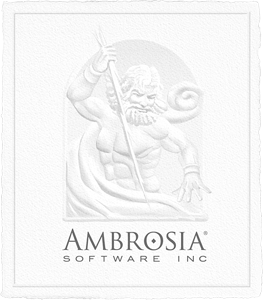
Ambrosia Software was a predominantly Macintosh software and gaming company founded in 1993 and located in Rochester, New York, U.S. Ambrosia Software was best known for its Macintosh remakes of older arcade games, which began with a 1992 version of Atari, Inc.'s Asteroids from 1979. The company also published utility software. Its products were distributed as shareware; demo versions could be downloaded and used for up to 30 days. Later the company released some products for iOS. Ambrosia's best-selling program was the utility Snapz Pro X, according to a 2002 interview with company president Andrew Welch.
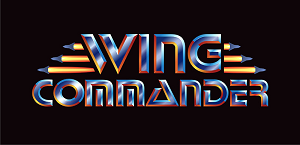
Wing Commander is a media franchise consisting of space combat simulation video games from Origin Systems, Inc., an animated television series, a feature film, a collectible card game, a series of novels, and action figures. The franchise originated in 1990 with the release of video game Wing Commander.
Spiderweb Software is an independent video game developer founded in 1994 by Jeff Vogel in Seattle, Washington. Its primary focus is on creating demoware games for the Mac, Microsoft Windows, Android and the iPad. The games emphasize storytelling and turn-based gameplay and use a retro style of graphics.

Maelstrom is a multidirectional shooter developed by Andrew Welch and released as shareware in November 1992 for Mac OS. The game is an enhanced clone of Atari, Inc.'s 1979 Asteroids arcade video game with a visual style similar to the Atari Games 1987 sequel, Blasteroids. Maelstrom was released when there were few action games for the high-resolution color displays of the Macintosh, and the game attracted attention despite the dated concept. The response led Welch to start Ambrosia Software.

Terminal Velocity is a shooter video game originally developed by Terminal Reality and published by 3D Realms for DOS and Windows 95, and MacSoft for Mac OS. It is an arcade-style flight combat game, with simpler game controls and physics than flight simulators. It is known for its fast, high-energy action sequences, compared to flight simulators of the time.
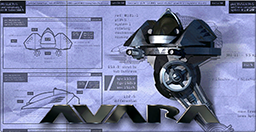
Avara is a 1996 first-person shooter written by Juri Munkki for Macintosh and published by Ambrosia Software. A fast 3D engine, integrated Internet play, and easy level editing were notable features at the time of its release. While not commercially successful, the game found a cult following. Munkki publicly released the source code in 2016, the game's 20th anniversary.
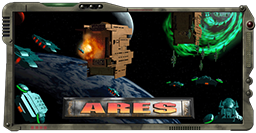
Ares is a space strategy video game created by Nathan Lamont of Bigger Planet Software, and first released by Changeling Software in 1998. In 1999 the game was re-released as shareware by Ambrosia Software and released as open source software and freeware in 2008. The key feature of the game was its ability to zoom in and out smoothly; this allowed the player to switch between a close-up view, which emphasized space combat skills, and a strategic view of the entire map.

Realmz is a fantasy adventure and role-playing video game first developed and published by Fantasoft in 1994 for the Apple Macintosh as shareware. Fantasoft released a Microsoft Windows-compatible version in 1999, and a science fiction role-playing game based on the Realmz engine, titled New Centurions, in 2001. Realmz was originally written by Tim Phillips on a Macintosh IIsi; he also wrote four game scenarios, including the introductory scenario "City of Bywater". Other original scenario contributors were Jim Foley and Sean Sayrs.

Cap'n Magneto is a shareware graphical adventure game released for the Apple III in 1983 and the Macintosh in 1985. In 2020, the game was re-released as freeware. The game follows Captain Lance Magneto as he attempts to capture the Crown of Control, a mind-control device being used to commit piracy around the planet Rigel IV. As he approaches the planet the device is used on his ship, causing it to crash. The player controls Magneto and tries to collect items from the map in order to capture the Crown and leave the planet.
SketchFighter 4000 Alpha is a 2006 Metroidvania scrolling shooter video game developed by Lost Minds and originally published by Ambrosia Software for Mac OS X. SketchFighter uses OpenGL and a custom game engine to create visuals for all elements of the game reminiscent of hand-drawn sketches.
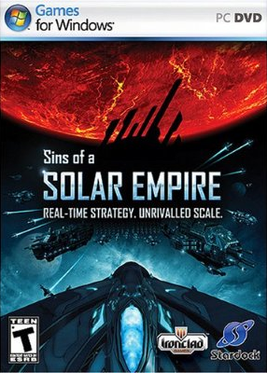
Sins of a Solar Empire is a 2008 science fiction real-time strategy video game developed by Ironclad Games and published by Stardock Entertainment for Microsoft Windows operating systems. It is a real-time strategy (RTS) game that incorporates some elements from 4X games; its makers describe it as "RT4X". Players are given control of a spacefaring empire in the distant future, and are tasked with conquering star systems using military, economic and diplomatic means.
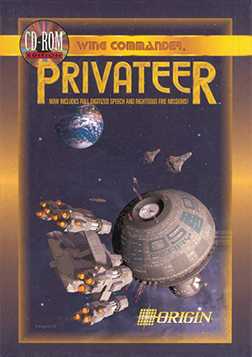
Wing Commander: Privateer is an adventure space trading and combat simulator computer video game which was released by Origin Systems in September 1993. Privateer and its storyline is part of the Wing Commander series. The player takes the role of Grayson Burrows, a "privateer" who travels through the Gemini Sector, one of many sectors in the Wing Commander universe. Unlike Wing Commander, the player is no longer a navy pilot, but a freelancer who can choose to be a pirate, a merchant, a mercenary or any of the above in some combination. The player may follow the built-in plot, but is free to adventure on his own, even after the plot has been completed.
Escape Velocity Override is a space trading simulator game written by Peter Cartwright, with the support of his school-friends, and developed by Ambrosia Software for the Apple Macintosh. It is the sequel to Escape Velocity with an extended version of the original game engine, but Override has an entirely new story line set in a different, larger universe.
Space Pirates and Zombies (S.P.A.Z.) is a real-time strategy video game released on August 15, 2011, on the Steam distribution platform. with a top-down perspective based around space combat. The game was developed by a two-man team under the studio MinMax Games using the Torque engine. The game was later ported for Mac OS X and Linux systems.

Starbound is a 2016 action-adventure game by Chucklefish. Starbound takes place in a two-dimensional, procedurally generated universe which the player is able to explore in order to obtain new weapons, armor, and items, and to visit towns and villages inhabited by various intelligent lifeforms. Starbound was released out of early access in July 2016 for Windows, macOS, and Linux, and for Windows via Xbox Game Pass in December 2020. It was also released for Xbox One in October 2024.
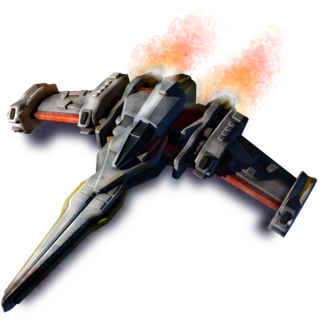
Endless Sky is a space trading and combat simulation video game, created by Michael Zahniser and first released in June 2015. In Endless Sky, the player starts out as a spaceship captain and can trade, transport passengers or fight pirates to earn money. There are also a few story lines that the player can choose to participate in. The game is similar to games in the Escape Velocity series.











